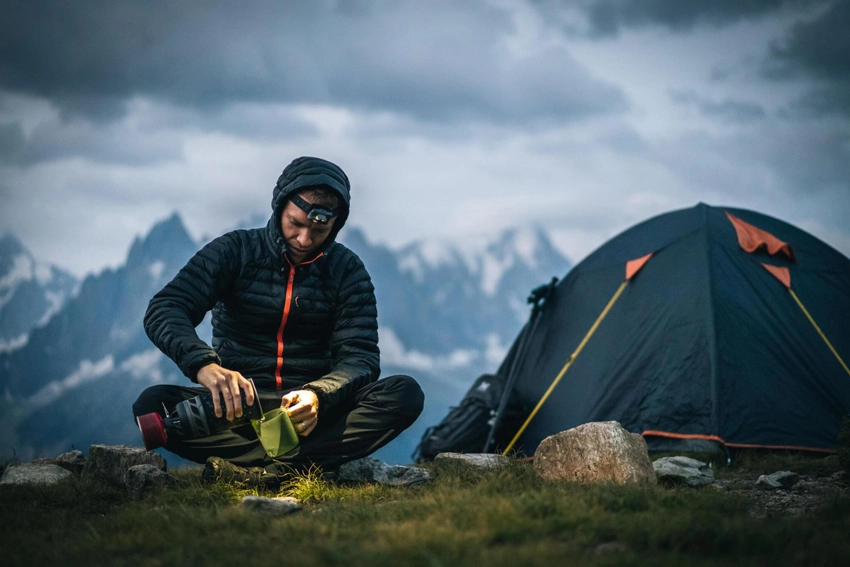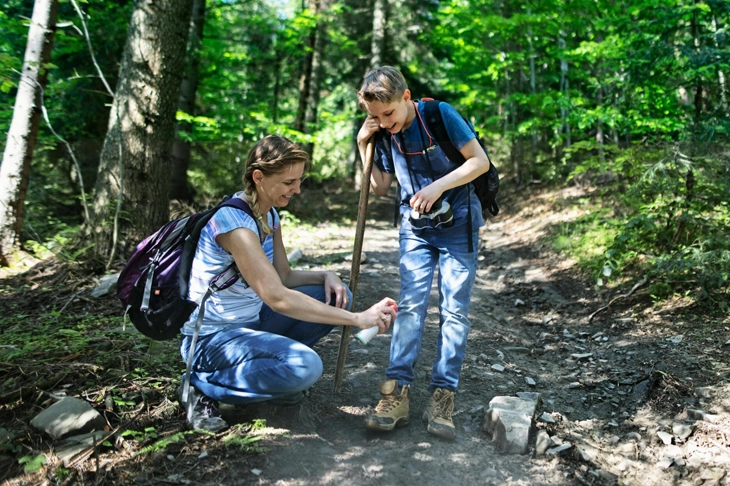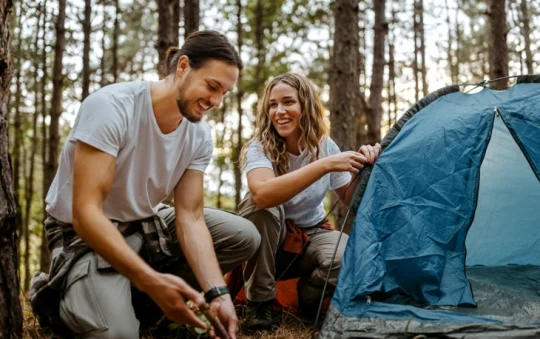Embarking on the adventure of backpacking introduces you to the vast wonders of nature. Beyond the captivating landscapes and winding paths, lies a fundamental set of skills crucial for every backpacker.
This guide delves into the essential basics that form the foundation of successful backpacking expeditions. These skills serve as the compass, guiding adventurers through unfamiliar territories, the sanctuary offering protection against the elements, and the sustenance fueling their journey. Whether you’re a seasoned trekker or new to the trails, mastering these skills is paramount for safety and enriching outdoor experiences.
Throughout this journey, we’ll explore vital navigation techniques, delve into the art of setting up shelter and campsites, uncover strategies for managing food and water, and prioritize safety and emergency preparedness. Embracing these core principles will empower you to embark on backpacking adventures with confidence, forging a deeper connection with the wilderness with each step you take.
Join us on this exploration as we uncover the essentials of backpacking and unlock the wonders of the great outdoors.
Navigation Skills
Navigation skills form the backbone of successful backpacking expeditions, enabling you to confidently traverse diverse terrain and reach your desired destinations. Whether you’re exploring remote trails or venturing into unfamiliar wilderness areas, mastering these skills is vital for safety and peace of mind.
Map Reading:
Learning to interpret topographic maps is a fundamental skill for all backpackers. These maps provide crucial information about the landscape, including elevation changes, water sources, and notable landmarks. Understanding contour lines, symbols, and scale helps you accurately assess distances and plan your route effectively.
Compass Use:
While GPS technology is popular, a dependable compass remains essential for wilderness navigation, especially in areas with limited satellite reception. Familiarize yourself with basic compass navigation techniques, such as taking bearings, orienting the map, and using the compass alongside map features.
GPS Navigation:
GPS devices offer valuable assistance in navigating challenging terrain. Get to know the features of your GPS device, including setting waypoints, tracking routes, and utilizing breadcrumb trails for backtracking. However, always carry a paper map and compass as backups in case of device failure or battery drainage.
Orientation:
Before embarking on a hike, take time to familiarize yourself with your surroundings. Identify prominent landmarks, note the direction of key features like rivers or mountain ranges, and mentally map out the area. Pay attention to trail signs, junctions, and natural cues to stay on track during your hike.
Pre-trip Planning:
Thorough pre-trip planning is crucial for a successful backpacking adventure. Research your route extensively, considering trail conditions, potential hazards, and available water sources. Plan alternative and emergency routes, and always inform someone of your itinerary before setting out.
By refining your navigation skills and practicing them regularly, you’ll build the confidence to explore new trails and wilderness areas safely. Remember, navigation isn’t just about finding your way—it’s also about enjoying the journey and fully immersing yourself in the beauty of nature.
Setting Up Shelter and Campsites for Backpacking
Choosing an appropriate campsite and setting up shelter are vital skills for backpackers. A well-selected campsite offers comfort, protection from the elements, and minimizes environmental impact. Here are key considerations for shelter and campsite setup:
Campsite Selection:
Opt for a flat, well-drained area away from hazards like dead trees or rocky terrain. Consider proximity to water sources, prevailing winds, and sun exposure. Follow Leave No Trace principles by using established campsites when possible to reduce environmental impact.
Types of Shelters:
Backpackers can choose from tents, hammocks, tarps, or bivy sacks. Each has pros and cons based on weight, weather conditions, and personal preference. Practice setting up your chosen shelter beforehand for efficient setup in the field.
Pitching Your Shelter:
Ensure proper setup for comfort and protection. Follow manufacturer instructions for tents, securing them taut and staked down. For hammocks or tarps, consider factors like angle and tree spacing for stability.
Campsite Organization:
Maximize efficiency and minimize impact by keeping your campsite organized. Designate areas for cooking, eating, sleeping, and gear storage. Hang food in bear-proof containers to prevent wildlife encounters and pack out all waste.
Leave No Trace:
Adhere to Leave No Trace principles to preserve wilderness areas. Dispose of waste properly, minimize campfire impacts, and respect wildlife. Leave the campsite cleaner than you found it for others to enjoy.
Mastering shelter and campsite setup ensures a safe and comfortable experience during backpacking adventures. Prioritize environmental stewardship to preserve wilderness areas for future generations.
Food and Water Management

Proper management of food and water is vital for maintaining energy, hydration, and overall well-being during backpacking journeys. Knowing how to acquire, treat, and conserve these essential resources ensures a safe and enjoyable outdoor experience. Here are some key principles for food and water management:
Hydration:
Staying properly hydrated is critical for backpackers, especially in hot and dry conditions. Carry enough water or locate reliable water sources along your route. Plan your water intake to remain hydrated throughout the day, considering factors like activity level, temperature, and humidity.
Water Treatment:
It’s important to treat all water from natural sources to prevent waterborne illnesses. Portable filtration systems, chemical tablets, or UV light devices effectively purify water in the wilderness. Follow manufacturer instructions for safe water treatment.
Food Planning:
Carefully plan your meals to ensure sufficient nutrition and energy for your backpacking adventures. Opt for lightweight, non-perishable foods high in calories and nutrients, like dehydrated meals, nuts, dried fruits, and energy bars. Consider weight, size, and preparation time when choosing food for your trip.
Food Storage:
Properly storing food is crucial for avoiding wildlife encounters and minimizing environmental impact. Use bear-resistant containers or hang food and scented items securely, particularly in bear-prone areas. Keep food and trash away from your campsite to deter wildlife and prevent conflicts.
Waste Management:
Follow Leave No Trace principles by reducing food waste and disposing of scraps and packaging properly. Pack out all trash, including wrappers and peels, to leave your campsite clean. Avoid burying or burning food waste to prevent attracting wildlife and disrupting ecosystems.
By prioritizing effective food and water management, you’ll have the necessary energy and hydration for safe and sustainable backpacking adventures. Plan ahead, stay hydrated, and minimize your impact on the environment to enjoy memorable experiences outdoors.
Safety and Emergency Preparedness
Ensuring safety and being prepared for emergencies are crucial for all backpackers, enabling them to handle potential risks and unforeseen challenges in the wilderness effectively. By acquiring the necessary knowledge, skills, and gear, you can reduce risks and enjoy outdoor adventures confidently. Here are some essential principles for safety and emergency preparedness:
First Aid Kit:
Always carry a well-equipped first aid kit containing supplies for treating common injuries and medical emergencies encountered during backpacking. Items like bandages, adhesive tape, antiseptic wipes, pain relievers, and blister treatment are essential for addressing minor health issues.
Emergency Shelter:
Include a lightweight emergency shelter, such as a space blanket, bivy sack, or compact tent, in your gear to provide protection from harsh weather conditions or unexpected overnight stays outdoors. Consider factors like durability, weather resistance, and ease of setup when choosing an emergency shelter.
Communication Devices:
Bring along communication devices like a cell phone, satellite phone, two-way radio, or personal locator beacon (PLB) to call for help in emergencies. Ensure these devices are fully charged and have good signal coverage for your hiking area.
Navigation Tools:
Carry reliable navigation tools such as a map, compass, or GPS device to help you navigate through unfamiliar terrain. Learn basic navigation techniques such as map reading, compass use, and GPS navigation to confidently find your way in various landscapes.
Emergency Plan:
Develop an emergency plan outlining actions to take in different emergency scenarios such as injuries, getting lost, or encountering severe weather. Share your itinerary and emergency plan with a trusted person before your trip, and establish a schedule for check-ins at specific times.
Weather Awareness:
Stay updated about weather conditions in your hiking area and be ready to adjust your plans based on changing weather forecasts. Monitor weather updates before and during your trip, and be prepared to seek shelter or alter your route to avoid hazardous conditions.
Leave No Trace:
Follow Leave No Trace principles to minimize your impact on the environment and preserve natural areas for future generations. Keep your campsite clean, pack out all trash and waste, and avoid disturbing wildlife or sensitive habitats.
Stay informed, be prepared, and take proactive steps to ensure a safe and enjoyable outdoor experience.
In Conclusion
Mastering essential skills is vital for safe and enjoyable backpacking adventures amidst nature’s grandeur.
Navigational proficiency is key for confidently traversing diverse landscapes and reaching destinations without hassle. Efficiently setting up shelters and campsites ensures comfort and protection from the elements, while managing food and water resources sustains energy levels throughout the journey. Prioritizing safety and preparedness equips individuals to handle unforeseen challenges adeptly.
Adhering to Leave No Trace principles remains paramount, minimizing ecological impact by meticulously removing waste and leaving campsites pristine. Embrace each adventure with curiosity, humility, and reverence for nature’s wonders, whether embarking on short trips or extensive treks. Every step in the wilderness offers opportunities for growth, exploration, and profound connection with the natural world.
As you venture into the great outdoors, find solace in the rhythm of your footsteps, draw inspiration from the surrounding beauty, and derive fulfillment from overcoming obstacles. Armed with these fundamental skills, may your backpacking experiences be enriched with enduring memories and a deep appreciation for nature’s transformative essence.
Ensure your backpacking gear includes efficient cooking equipment for convenient meal preparation on the trail.
Approach your expeditions with curiosity, humility, and awe for the natural world. Wishing you safe travels, and may your adventures be as boundless as the horizon stretching before you.





